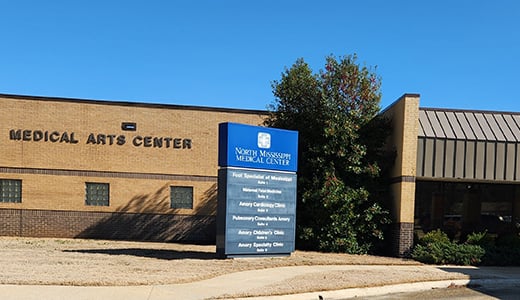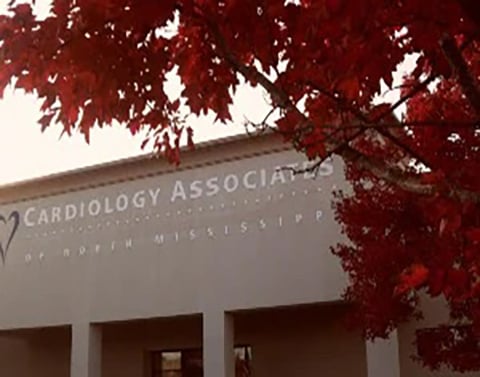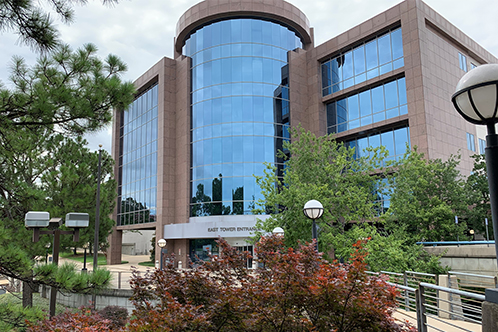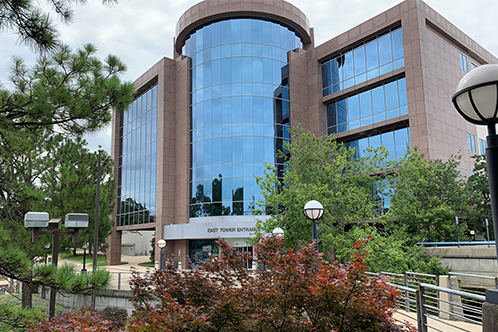- Medical Services
- Heart and Vascular Care
- Specialties & Services
- Electrophysiology
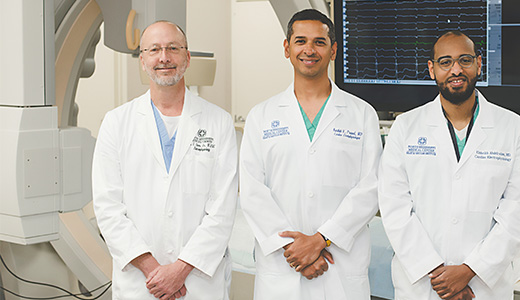
Cardiac Electrophysiology
Our cardiac electrophysiologists diagnose and treat heart rhythm disorders, including atrial fibrillation.

Rhythm of Life
A complex electrical system coordinates your heart’s rhythm and keeps the heart’s chambers contracting and relaxing. But sometimes an abnormal rhythm, or arrhythmia, develops.
Advanced Treatment for Arrhythmia
Electrophysiology (EP) studies help doctors understand the cause of abnormal heart rhythms. EP studies help determine where an arrhythmia is coming from and the best way to treat it. Depending on your specific problem, your doctor may choose to treat you with medication or one of these procedures:
Left Atrial Occlusion Device
Our cardiac electrophysiology (EP) team has now implanted more than 1,000 Watchman left atrial appendage occlusion devices to prevent stroke in patients with atrial fibrillation. The Watchman is an alternative for patients for whom long-term use of blood-thinning medications is problematic. The Watchman serves as a plug, sealing the left atrial appendage to keep larger blood clots from entering the bloodstream.
Our EP team performed the first transhepatic Watchman procedure in Mississippi and only the fourth nationwide. The patient's femoral blood vessels were too twisted to allow access to his heart, but our team did not give up. After thoroughly researching a different technique, our EP collaborated with an interventional radiologist at NMMC-Tupelo to implant the Watchman via a hepatic vein through the liver.
In addition, our EPs were the first in the nation to implant the Amulet left atrial appendage device.
Our EP team is actively involved with research for new left atrial appendage closure devices.
Cardiac Contractility Modulation Device
Heart failure patients often experience debilitating symptoms, including breathlessness, fatigue, confusion and swelling in the legs, which make everyday activities challenging. When medications aren’t enough to improve your heart failure symptoms, your doctor may recommend cardiac contractility modulation (CCM).
This innovative technology improves the contraction of the heart, which allows more oxygen-rich blood to reach the body. CCM therapy delivers precisely timed electrical pulses to the heart that are intended to improve the heart’s ability to contract.
While you are lightly sedated, a small device called the Optimizer® is implanted under the skin of your upper chest, along with electrical leads that are placed in the heart’s right ventricle through the veins. The implanted device then sends precisely calibrated and timed electrical pulses to the heart muscle during one-hour treatment periods scheduled intermittently throughout the day.
By improving the symptoms of heart failure, you feel better and can start doing the things you love again.
Pacemaker
This two-part electrical system includes a pulse generator (pacemaker) and one or two leads, or wires, which deliver impulses to the heart. The leads also carry signals back from the heart. By “reading” these signals, the pulse generator can check the heart’s activity and respond appropriately. A pacemaker helps to pace the heart when its own rate is too slow to pump enough blood to the body.
Implantable Cardioverter Defibrillator
An implantable cardioverter defibrillator (ICD) administers an electric shock to control irregular heartbeat and restore it to normal. The cardiologist places leads (wires) in the heart's right ventricle (single chamber system) or in the right ventricle and atrium (dual chamber system). Both single chamber or dual chamber systems may require many leads.
Biventricular Device
A biventricular device (pacemaker or ICD) treats moderate to severe heart failure. This feature is available on some pacemakers. Unlike standard devices, the biventricular system has leads (wires) to the right ventricle with an additional lead to the left ventricle. By pacing the left ventricle from two sites, the heart’s contraction is “resynchronized,” which can enhance the heart's pumping efficiency.
Extraction
An extraction procedure is removal of a device and/or lead(s) as well as device replacement and/or lead replacement or revision surgery. Our electrophysiologists coordinate extraction surgery with a cardiothoracic surgeon and anesthesia services.
Implantable Loop Recorder (IRL)
An implantable loop recorder (ILR) is inserted under the skin in the chest to record arrhythmias. An injectable ILR can be inserted at your bedside without sedation. The benefits of an injectable ILR versus a regular implantable ILR include more memory, wireless monitoring, a remote activator and longer battery life. Individuals with an ILR can have an MRI.
Catheter Ablation
Cardiac ablation is a procedure to treat heart rhythm disorders (arrythmias), including atrial fibrillation, atrial flutter, supraventricular tachycardia, Wolff-Parkinson-White (WPW) syndrome and ventricular tachycardia.
Radiofrequency Cardiac Ablation/Cryoablation
Radiofrequency catheter ablation or cryoablation procedures destroy the AV node or specific areas of heart tissue responsible for an irregular heart rhythm. If the AV node is destroyed to prevent fast heart rates, you will need a pacemaker to send regular impulses to the lower heart chambers (ventricles). If tissue other than the AV node is responsible for rapid heart rates, you may not need a pacemaker.
Cardioversion
Cardioversion uses an electrical signal to “shock” an arrhythmia. It can be done externally or internally if the patient has an implantable cardioverter defibrillator (ICD).
LifeVest
Insurance regulations require a 90-day waiting period after bypass surgery if you are being considered for an implantable cardiac defibrillator. In the interim, physicians may recommend you wear a LifeVest defibrillator while they assess long-term risk for arrhythmia, or irregular heart rhythm. The LifeVest, which is custom fit for you and worn under clothes, constantly monitors your heart, detects arrhythmias and, if needed, shocks your heart back into normal rhythm. The external defibrillator can protect you until an internal defibrillator can be implanted or your heart recovers.
Radiofrequency Septal Ablation
Radiofrequency septal ablation treats hypertrophic obstructive cardiomyopathy (HCM), a genetic disease where the heart’s septum is enlarged or thickened. This condition can cause shortness of breath, chest pain, fainting, congestive heart failure and abnormal heart rhythms which are sometimes fatal. In this procedure, an advanced cardiac mapping system helps target the thickest part of the septum. Then a catheter delivers radiofrequency energy to ablate (or burn) the excess tissue and reduce the thickness.
Micra Transcatheter Pacing System (TPS)
Micra Transcatheter Pacing System (TPS) is the world’s smallest pacemaker for patients with problematic slow heart rates. While traditional pacemakers involve surgical implantation of a device in the chest with flexible wires called “leads” extending into the heart, Micra is 93% smaller than traditional pacemakers (measuring about the size of a large vitamin), which makes it cosmetically invisible. More importantly, Micra requires neither the leads going into the heart nor the surgical “pocket” under the chest. Instead, Micra is small enough to be delivered through a catheter and implanted directly into the heart in a procedure similar to a heart catheterization.
Triple-Chamber Pacemaker
NMMC was among the first hospitals nationwide to implant the Evia HF-T triple-chamber cardiac resynchronization therapy pacemaker. The device puts out pulses to keep the heart beating regularly and on time, improving the health of patients with bradycardia and heart failure. Its wireless home monitoring technology uses a cellular network to pick up information from the patient’s implanted device and transmit it to cardiologists daily. The device also measures thoracic impedance or lung fluid levels and alerts the physician before full-fledged heart failure develops.
Related Locations
State-of-the-art cardiac care only matters if we know the state of your heart. Request a screening online or call 1-800-843-3375.
